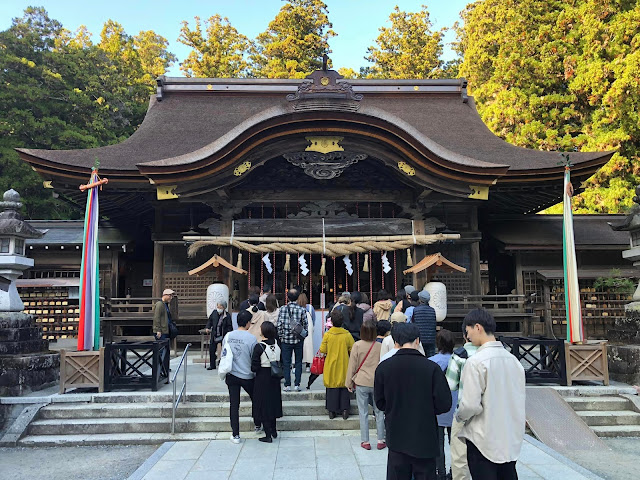Last weekend, I decided to visit Okuni Shrine (小國神社 / Okuni jinja), one of the oldest and most famous shrines in Shizuoka Prefecture. I heard that the shrine is especially beautiful in autumn when the leaves turn red and yellow. I wanted to see the scenery for myself and learn more about the history and culture of the shrine.
We drove from Hamamatsu to Mori, where the shrine is located, which took about an hour and a half. The road was smooth and scenic, and we enjoyed the view of the mountains and the lake. We listened to some music and chatted happily.
When we arrived at the shrine, we parked our car in a nearby parking lot and walked to the entrance. We saw a large torii gate that marked the entrance. We walked through the gate and followed a stone path that led us to the main hall. Along the way, we saw many trees with colorful leaves that contrasted with the green moss and the gray roof tiles. The shrine was surrounded by nature and had a peaceful and sacred vibe.
We also saw many other children who were dressed in kimonos for Shichi-Go-San. They were all adorable and lively, and they added a festive atmosphere to the shrine. Some of them were shy and curious, while others were confident and cheerful. They all looked happy and healthy, and I wished them all the best.
I learned that Okuni Shrine is one of the two shrines claiming the title of Ichinomiya of the former Tōtōmi Province. The shrine was founded in the 6th century and enshrines the god Ōkuninushi (大国主), who is the deity of nation-building, farming, business, and medicine. The shrine has a long history and has been supported by many powerful clans and rulers, such as Tokugawa Ieyasu.
I explored the shrine grounds and found some interesting spots. One of them was a pond called Kotomachi Pond. The pond was clear and calm.
In front of the Torii gate, there are many delicious food stalls that offer local specialties such as Mori soba, grilled eel, and sweet rice cakes. There are also green teas and soups that you can try for free. These food stalls are especially popular during the shrine’s main festival, which is held on April 18 every year.
We spent a few hours at the shrine and felt relaxed and refreshed. I was impressed by the beauty and the history of the shrine, and I learned a lot about the local culture and religion. I think the Okuni Shrine is a great place to visit in autumn, and I recommend it to anyone who is interested in Japanese shrines and nature.














Comments
Post a Comment